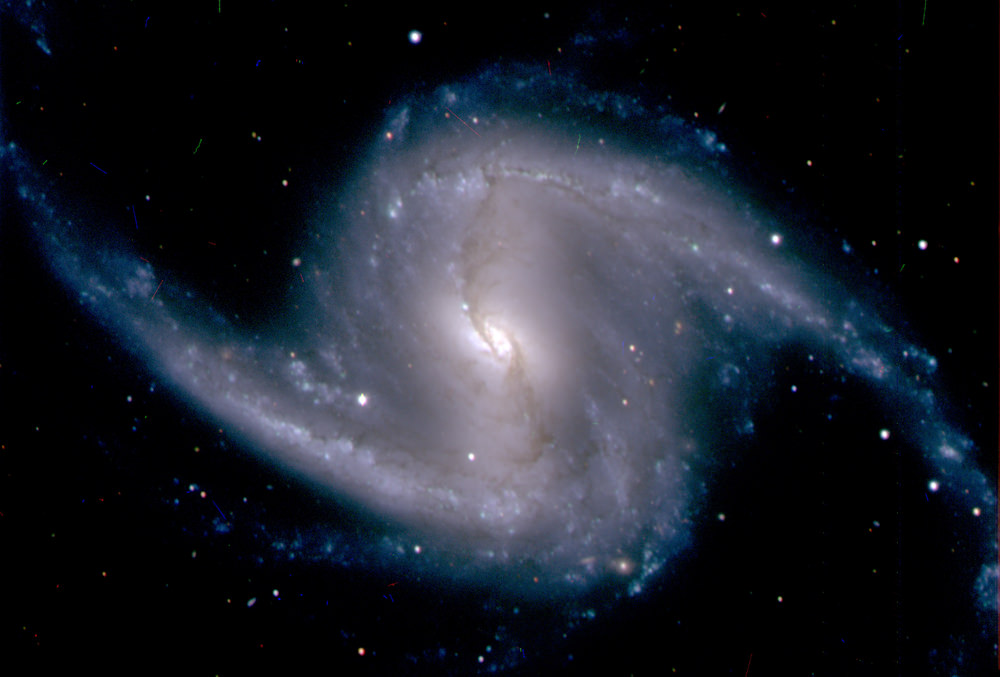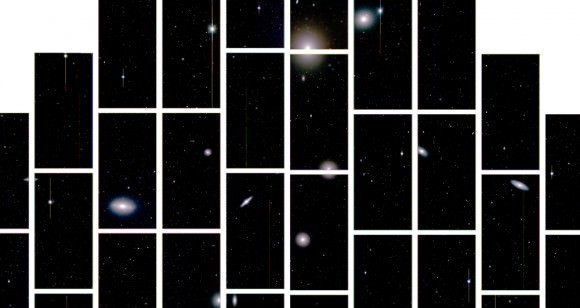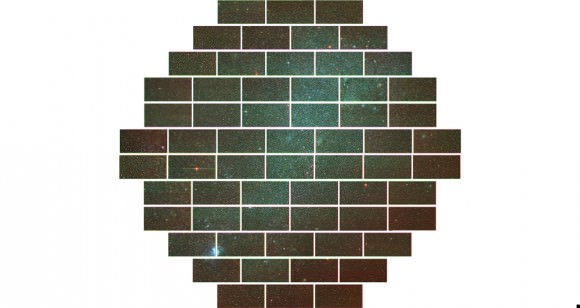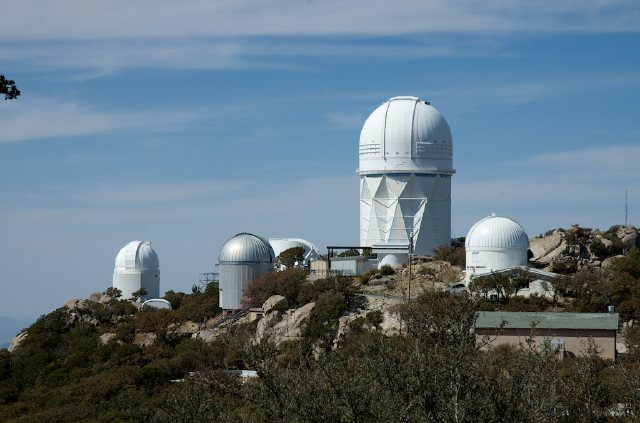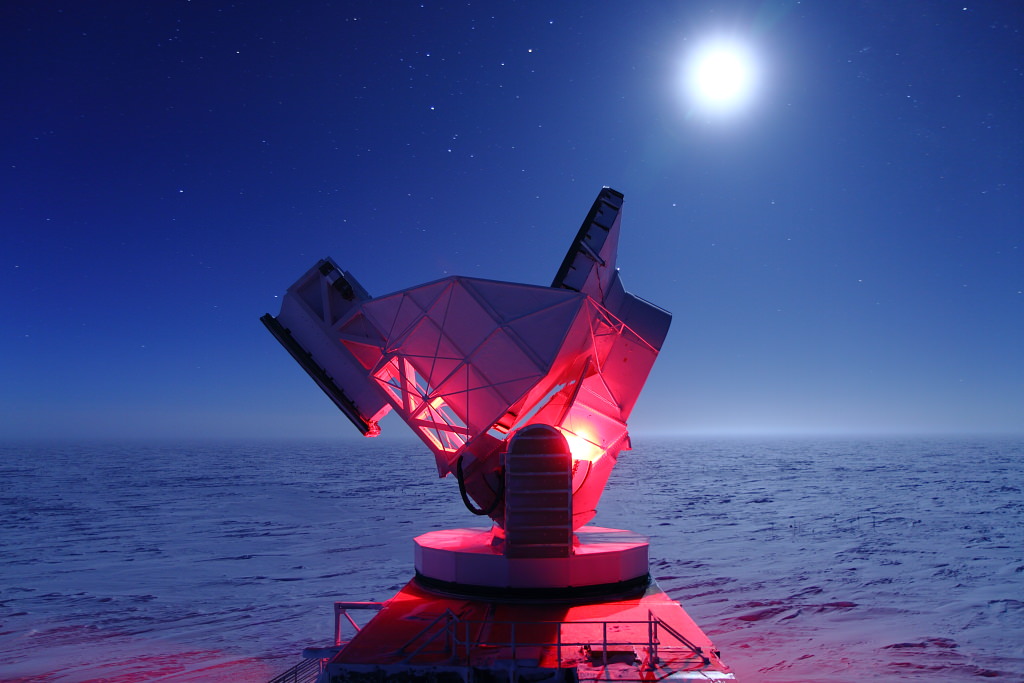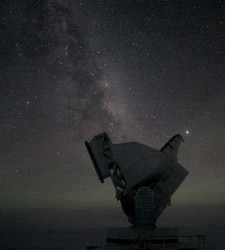A “speckle image” reconstruction of Pluto and its largest moon, Charon (Gemini Observatory/NSF/NASA/AURA)
Real planet, dwarf planet, KBO, who cares? What matters here is that astronomers have created the sharpest image of Pluto ever made with ground-based observations — and developed a new way to verify potential Earth-like exoplanets at the same time.
Here’s how they did it:
After taking a series of quick “snapshots” of Pluto and Charon using a recently-developed camera called the Differential Speckle Survey Instrument (DSSI), which was mounted on the Gemini Observatory’s 8-meter telescope in Hawaii, researchers combined them into a single image while canceling out the noise caused by turbulence and optical aberrations. This “speckle imaging” technique resulted in an incredibly clear, crisp image of the distant pair of worlds — especially considering that 1. it was made with images taken from the ground, 2. Pluto is small, and 3. Pluto is very, very far away.
Read: Why Pluto is No Longer a Planet
Less than 3/4 the diameter of our Moon, Pluto (and Charon, which is about half that size) are currently circling each other about 3 billion miles from Earth — 32.245 AU to be exact. That’s a long way off, and there’s still much more that we don’t know than we do about the dwarf planet’s system. New Horizons will fill in a lot of the blanks when it passes close by Pluto in July 2015, and images like this can be a big help to mission scientists who want to make sure the spacecraft is on a safe path.
“The Pluto-Charon result is of timely interest to those of us wanting to understand the orbital dynamics of this pair for the 2015 encounter by NASA’s New Horizons spacecraft,” said Steve Howell of the NASA Ames Research Center, who led the Gemini imaging study.
See images of Pluto taken by Hubble here.
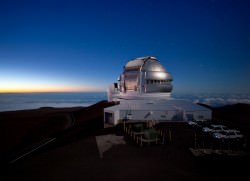 In addition, the high resolution achievable through the team’s speckle imaging technique may also be used to confirm the presence of exoplanet candidates discovered by Kepler. With an estimated 3- to 4-magnitude increase in imaging sensitivity, astronomers may be able to use it to pick out the optical light reflected by a distant Earth-like world around another star.
In addition, the high resolution achievable through the team’s speckle imaging technique may also be used to confirm the presence of exoplanet candidates discovered by Kepler. With an estimated 3- to 4-magnitude increase in imaging sensitivity, astronomers may be able to use it to pick out the optical light reflected by a distant Earth-like world around another star.
Speckle imaging has been used previously to identify binary star systems, and with the comparative ability to “separate a pair of automobile headlights in Providence, RI, from San Francisco, CA” there’s a good chance that it can help separate an exoplanet from the glare of its star as well.
The research was funded in part by the National Science Foundation and NASA’s Kepler discovery mission, and will be published in the journal Publications of the Astronomical Society of the Pacific in October 2012. Read more here.
Main image: the first speckle reconstructed image for Pluto and Charon from which astronomers obtained not only the separation and position angle for Charon, but also the diameters of the two bodies. North is up, east is to the left, and the image section shown is 1.39 arcseconds across. Resolution of the image is about 20 milliarcseconds rms. Credit: Gemini Observatory/NSF/NASA/AURA. Inset: the Gemini North telescope on the summit of Mauna Kea. (Gemini Observatory)


